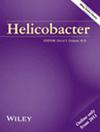This study evaluates the accuracy of melting curve–based multiplex real-time PCR (multiplex rt-PCR) on stool samples for diagnosing antibiotic resistance in Helicobacter pylori (H. pylori) compared to E-test and sequencing.
Gastric biopsies and stool samples were collected from 385 H. pylori-infected patients. A total of 325 strains were isolated, and genomic DNA was extracted from all 385 stool samples. E-tests were conducted to detect phenotypic resistance for clarithromycin and levofloxacin. Sanger sequencing and multiplex rt-PCR were employed to identify H. pylori 23S rRNA and GyrA mutations.
E-test results indicated that 203 (62.5%) were susceptible to both clarithromycin and levofloxacin, 33 (10.2%) exhibited mono-resistance to clarithromycin, 48 (14.8%) showed mono-resistance to levofloxacin, and 41 (12.6%) had dual resistance to both antibiotics. Compared to E-test results, the sensitivity and specificity of the multiplex rt-PCR method for detecting clarithromycin resistance mutation were 93.2 (95% CI 84.3–97.5) and 87.1% (95% CI 82.2–90.9), respectively. For levofloxacin resistance mutation, the multiplex rt-PCR method showed a sensitivity of 80.7 (95% CI 70.3–88.3) and a specificity of 93.0% (95% CI 88.7–95.8). Compared to Sanger sequencing, the sensitivity and specificity of the multiplex rt-PCR method for detecting clarithromycin resistance mutation were 95.8 (95% CI 90.0–98.4) and 96.0% (95% CI 92.6–98.0), respectively. For levofloxacin resistance mutation, the multiplex rt-PCR method showed a sensitivity of 91.3% (95% CI, 83.1–95.9) and a specificity of 96.1% (95% CI, 92.7–98.0).
Genotypic methods, including Sanger sequencing and multiplex rt-PCR, were rapid and reliable for diagnosing clarithromycin and levofloxacin resistance in the stool samples.


